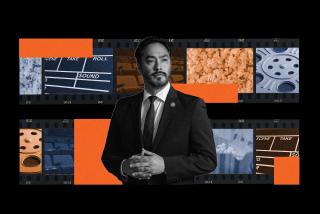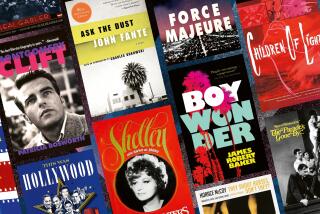The books behind the new films at the Library of Congress [Video]
The Library of Congress announced the names of 25 films Wednesday that are to be enshrined in its National Film Registry. Of those 25, 5-1/2 were based on books or stories. The half? Read on.
The 1983 film “A Christmas Story” -- with Ralphie, a frozen tongue and the fra-gee-lay leg lamp -- was based on the short story collection “In God We Trust, All Others Pay Cash” by Jean Shepherd, first published in 1966. Shepherd was a humorist who worked in radio, television, print and film -- he co-wrote the screenplay of “A Christmas Story” and is the movie’s voiceover narrator.
Otto Preminger’s 1958 courtroom drama “Anatomy of a Murder” was based on a novel by John D. Voelker, which was based on a case in Michigan. Voelker was an attorney, judge, bestselling author and good sport -- he appears in the film’s trailer, along with the more cinematically experienced Jimmy Stewart, Ben Gazarra and Duke Ellington.
The 1961 film “Breakfast at Tiffany’s” is probably best remembered for Audrey Hepburn as the elusive, glamorous girl-about-town Holly Golightly. How many layers did she bring to her performance? Truman Capote’s original novella was more explicit about Golightly’s relationships with men: her wealthy male companions were expected to provide her with expensive gifts or even cash in exchange for spending the night with her.
“The Spook Who Sat by the Door” was a 1969 bestseller by Sam Greenlee about African American revolution, led by an ex-CIA operative. “I wrote angry,” Greenlee told a Detroit audience in 2010 (during his appearance, the octogenarian used strong language). The film version of his book, released in 1973, proved to be so controversial that it was pulled after three successful weeks in theaters.
The Library of Congress cited the 1914 version of “Uncle Tom’s Cabin” for being the first full-length feature film to star an African American actor -- Sam Lucas, playing Unlce Tom. Harriet Beecher Stowe’s novel, published in 1852, was a bestseller.
As for the half film? “The Matrix” (1999) was a breakthrough film for its stunning visuals; it brought the fantastic possibilities of science fiction to a new level. The writer-directors, the Wachowskis, were bold and creative filmmakers -- but they owe a clear debt to William Gibson’s novel “Neuromancer,” published in 1984. In this clip, Gibson talks about having just seen “The Matrix,” and about the externalized neural networks we now call the Internet.
ALSO:
Penguin settles in e-book price fixing case
Essential reading after Newtown: ‘Columbine’ by Dave Cullen
Former Amazon warehouse workers face a sad predicament
Carolyn Kellogg: Join me on Twitter, Facebook and Google+
More to Read
Sign up for our Book Club newsletter
Get the latest news, events and more from the Los Angeles Times Book Club, and help us get L.A. reading and talking.
You may occasionally receive promotional content from the Los Angeles Times.







